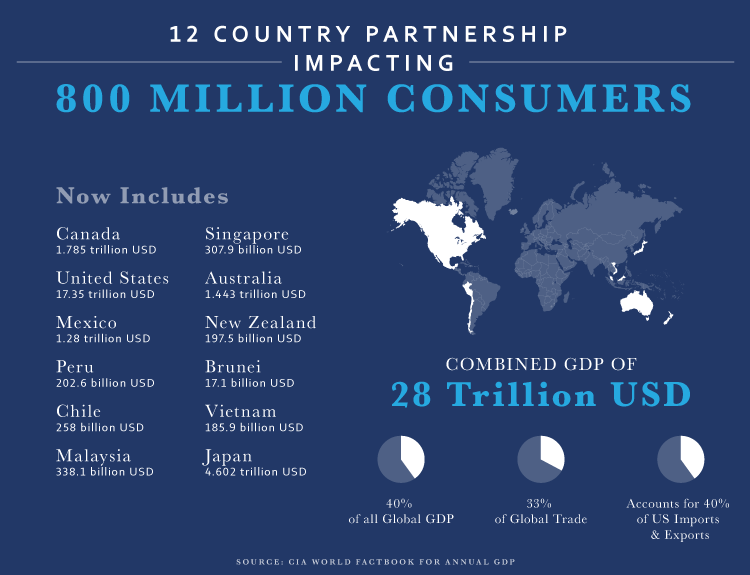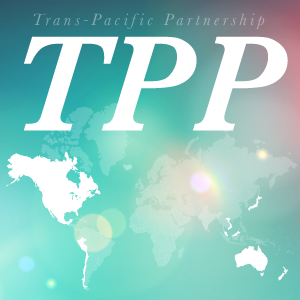The Trans-Pacific Partnership (TPP) is gaining momentum. If “TPP” isn’t as popular as “lol”, it will be soon. That’s because the TPP is a big deal. We’ll be doing several blogs over the coming months as additional details regarding the Agreement become known so you can stay up to date.
For now, let’s start with the basics. The original plan of a four-nation pact between Singapore, New Zealand, Chile, and Brunei has grown to be a 12 country partnership impacting 800 million consumers, and now includes the U.S., Canada, Mexico, Peru, Japan, Vietnam, Malaysia, and Australia. Together, this makes it the largest regional trade accord in history, with a combined GDP of 28 Trillion USD. To put that into perspective, that is 40% of all Global GDP, 33% of global trade, and accounts for 40% of US Imports and Exports.
While we, the lovely people at Tradewin, typically focus on an FTA in terms of reducing tariffs and confirming rules of origin (qualifying goods for FTAs is one of our main businesses), the TPP affects a variety of coverage areas including market access, trade remedies, financial services, intellectual property, the environment, anti-corruption, and more. Telecommunications, manufacturing, and distribution all stand to see effects from the Agreement.
The road to ratification is a long one, and needs the agreement of at least six countries account for 85% of the group’s GDP to become effective – this makes the U.S. and Japan particularly important. But, the implications will be significant for certain industries, such as Apparel and Automotive, and for countries like Vietnam if it all goes through.
If the TPP is a little overwhelming for you, please don’t hesitate to reach out to Tradewin. We live for this stuff.
![]()






